Washington, D.C. – U.S. Senators John Curtis (R-UT) and Catherine Cortez Masto (D-NV) introduced the Strategic Grazing to Reduce the Risk of Wildfire Act, bipartisan legislation to direct the Department of the Interior (DOI) and the U.S. Forest Service (USFS) to collaborate with grazing allotment holders, States, Tribes, and local fire departments to create a strategy to use targeted grazing to manage hazardous fuels and reduce risks from wildfires.
“Utah has already experienced 218 wildfires this year, marking a nearly 50% increase compared to this point last year,” said Senator Curtis. “While officials anticipate an above-average wildfire season, I am encouraged by proposals that include grazing and use of public lands for fire mitigation. Our bipartisan legislation will help empower local officials and fire crews to develop targeted strategies like these to manage hazardous fuels and decrease risks.”
“As the West continues to face the threat of wildfires, it’s essential that we look for ways to protect our communities from devastation,” said Senator Cortez Masto. “This bill takes a wildfire prevention and mitigation strategy that’s been proven to work and puts it in place at the federal level. We must make sure there’s an overarching plan to combat these fires that have become all too frequent.”
Background:
The American West has long been prone to wildfires, but climate change, prolonged drought, and the buildup of dry fuels have increasingly intensified these fires and extended fire seasons. Wildfires today are more catastrophic—growing larger, spreading faster, and burning more land than ever before.
Utah saw a total of 1,244 wildfire reports in 2024—a 54% increase from 2023 and the highest level the state has recorded since 2020. Nationwide, total acres burned rose from 2.7 million in 2023 to nearly 9 million in 2024, a 231% increase. In 2025, Utah has seen 218 wildfires—a nearly 50% increase from the 147 fires recorded at this same time one year ago.
Pilot programs across the United States have shown that the use of strategic grazing can reduce hazardous fuels and slow the spread of a wildfire. The Strategic Grazing to Reduce the Risk of Wildfire Act directs federal agencies to consider the following in the development of the strategic grazing framework:
- Targeting specific high-risk areas for grazing—especially those near populated areas.
- Using temporary grazing permits to reduce risks caused by annual grasses or invasive grasses like cheatgrass that burn easily and help fires spread more quickly.
- Recommending the use of strategic grazing when providing technical assistance to communities and Tribes undertaking their own wildfire risk management projects.
- Reimbursing States, local governments, Tribes, and local firefighting agencies who use strategic grazing on federal lands in coordination with federal land management agencies.
The full text of the bill can be found here.
